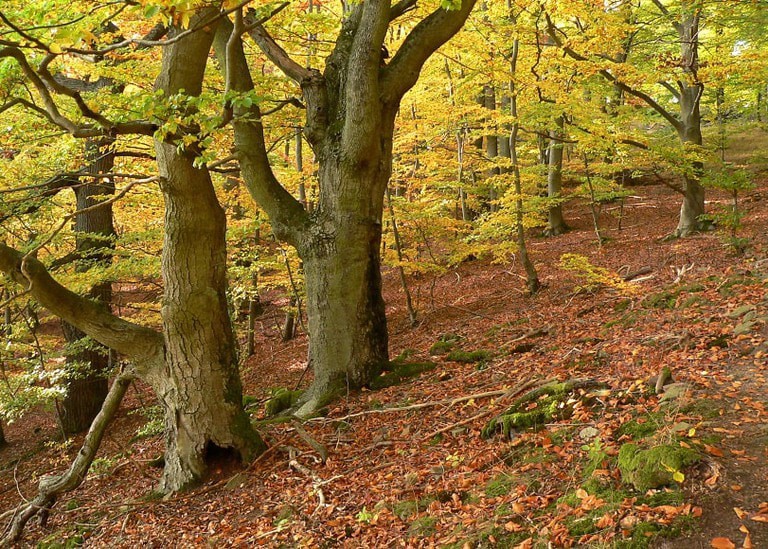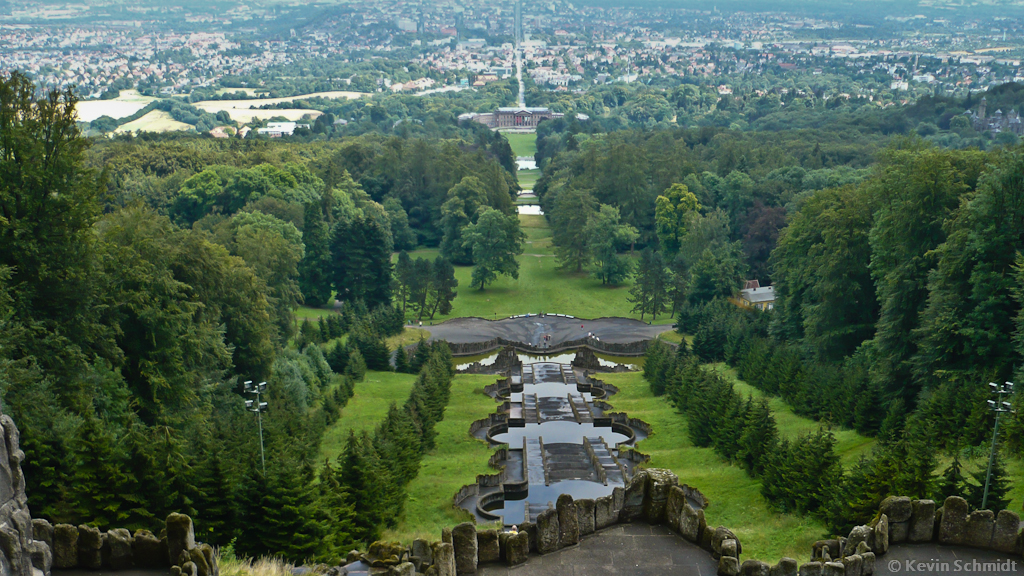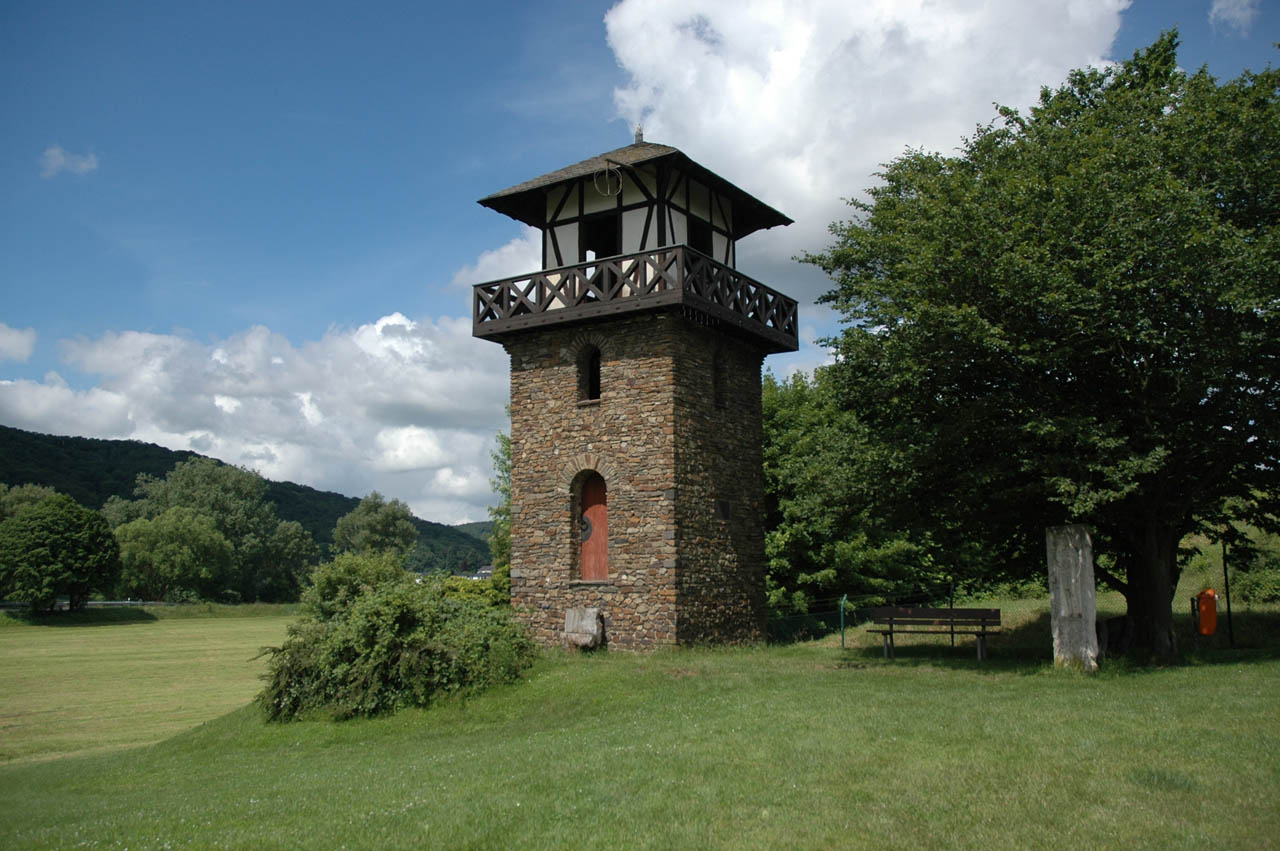Beech forests of Kellerwald-Edersee National Park

In 2011, five of Germany’s beech forests made it to the coveted UNESCO list, including the beech forest of Kellerwald-Edersee National Park. This forest, one of the last of its kind in Central Europe, sprawls over 1,500 hectares and is made up mostly of the stony luzulo variety of beech. The age of the trees in this forest range from 120 years to 260 years. This extensive stretch of beech has grown unhindered by traffic or human settlement, and hikers are allowed to explore only on designated paths.
Upper Middle Rhine Valley

The Upper Middle Rhine Valley was the first natural feature to be bestowed the UNESCO title in Germany. This 65 km (40 mile) stretch, shared by the states of Hesse and Rhineland, earned the title for the amazing harmony between nature and culture. The gorgeous river views, a string of hilltop palaces and castles, picture-book hamlets, rolling vineyards and several cultural monuments prompted gifted German poet and author, Heinrich von Kleist, to gush “This is a region like a poet’s dream, and even the most magnificent imagination could not countenance anything more beautiful than this valley.”
Bergpark Wilhelmshöhe, Kassel

Bergpark Wilhelmshöhe is not only among the most beautiful parks in Germany, but is the one of its kind in the whole of Europe. The massive 240-hectare park took 150 years to be completed, and the result is a magnificent expanse of gorgeous landscape and water features peppered with cultural monuments, the most noteworthy among which is the mock-medieval ruins of the very Instagrammable Löwenburg Castle. Another sight that draws lots of ‘ooh’s and ‘aah’s from visitors in the park is the Hercules Monument crowning the 526 meter (1,725 ft) Karlsberg Mountain, from which a waterfall gushes down stone steps and rocks.
Lorsch Benedictine Abbey

Lorsch Benedictine Abbey, dating back to the year 764, was one of the most significant monuments of the Carolingian Empire. This ancient structure stands as testimony to the architectural genius of the early Middle Ages, and still stuns visitors with the intricacy of its design, though much of it is today in ruins. Lorsch Benedictine Abbey was declared a UNESCO World Heritage Site in 1991.
Measles Fossil Pit

The Messel Fossil Pit, exhibiting the first stages of the evolution of mammals, is unparalleled in archeological significance. The pit has preserved flora and fauna fossils belonging to the Eocene epoch that are more than 50 million years old. The most unique among the treasures housed in the pit is probably the fossil of Propalaetherium Messelense or Messel prehistoric miniature horse. The pit can be explored as part of a guided tour. There are also several museums (for example, Senckenberg Museum of Natural History in Frankfurt am Main) across Hesse that exhibit priceless fossils and relevant documents.
Roman Limes

The Limes Route is named after līmes – fortifications and other defence monuments dating back to the Roman times. The 550 km (342 mile) long route stretches across four German states – Baden-Württemberg, Bavaria, Hesse and Rhineland-Palatinate, and connects 900 watchtowers and 120 forts across 80 towns. While some of these monuments have been preserved in an almost-original condition, some others have been reconstructed in later centuries.
Brothers Grimm Fairytales

Brothers Grimm fairytales are among the most famous stories in the world, and have been a part of the bedtime of children around the world for generations. The legendary brothers Jacob and Wilhelm Grimm lived, studied and worked in the state of Hesse for many decades. Several original handwritten manuscripts were added to UNESCO’s “Memory of the World” register (World Document Heritage) in 2005. In several locations across Germany (including Hesse), you can relive the magical stories of the Brothers Grimm.
Source: https://t24hs.com







